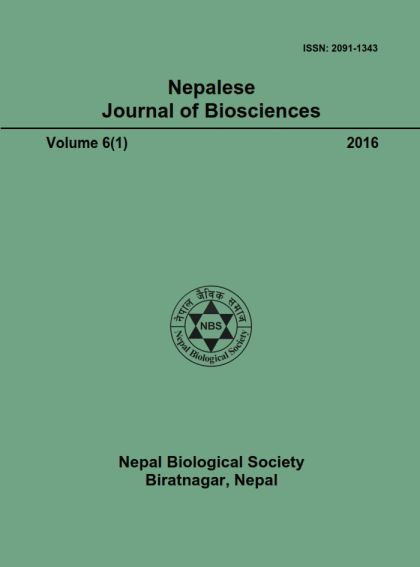Variation in litter mass and its turnover in Tarai Sal forest and Hill Sal forest of eastern Nepal
DOI:
https://doi.org/10.3126/njbs.v6i1.41787Keywords:
Sal forest, Nutrients, Soil fertility, Forest ecosystemAbstract
Litter on the forest floor is an important source of nutrient cycling which helps to improve the soil fertility in forest ecosystem. Comparative study was conducted to investigate the amount of annual litter mass, seasonal variation and its turnover in Tarai Sal forest (TSF) and Hill Sal forest (HSF) of eastern Nepal. Litter mass was collected in each season from 1m × 1m quadrat placed randomly on the forest floor. The total annual litter mass in TSF (6.73 Mg ha-1) was significantly (p < 0.001) higher than in HSF (5.63Mg ha-1). The seasonal pattern of litter mass was higher in summer (9.04 Mg ha-1 and 7.44 Mg ha-1) followed by rainy (6.29 Mg ha-1 and 5.11 Mg ha-1) and winter season (4.9 Mg ha-1 and 4.35 Mg ha-1) in TSF and HSF, respectively. The turnover rate for litter mass on the forest floor was higher (79%) in TSF than HSF (70%). However, turnover time was higher in HSF than TSF. Standing state nutrient in the litter layer was higher in TSF (56.21 kg N ha-1 yr-1, 6.19 kg P ha-1 yr-1 and 17.15 kg K ha-1 yr-1) than HSF (45.16 kg N ha-1 yr-1, 4.7 kg P ha-1 yr-1 and 14.19 kg K ha-1 yr-1). The difference in litter mass between these two forests may be due to differences in micro climate, soil properties and species composition.




